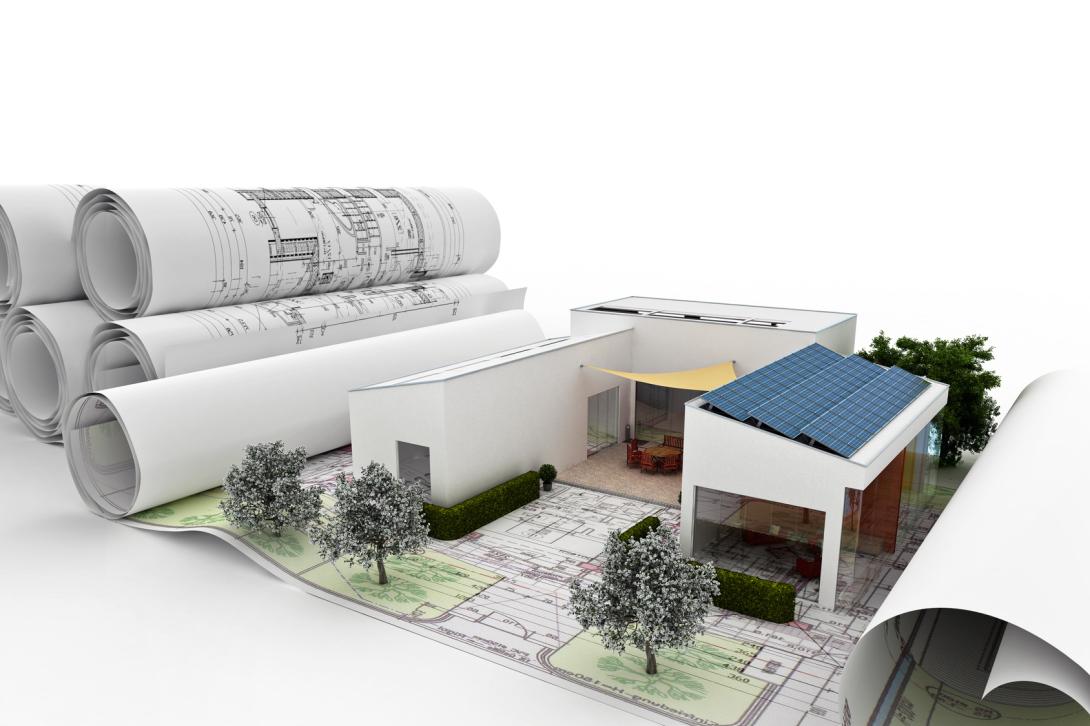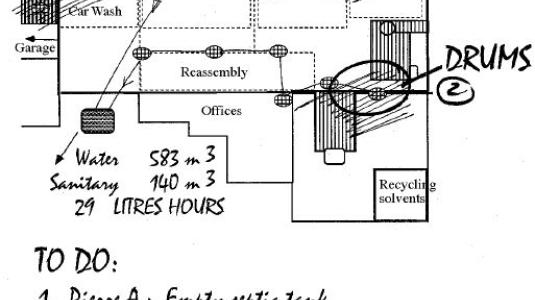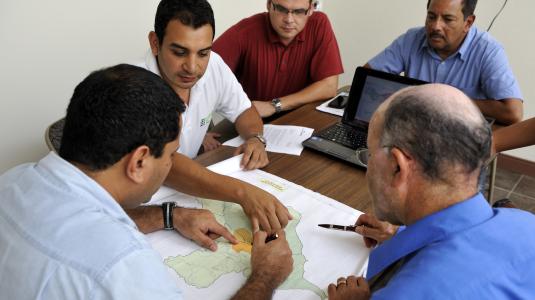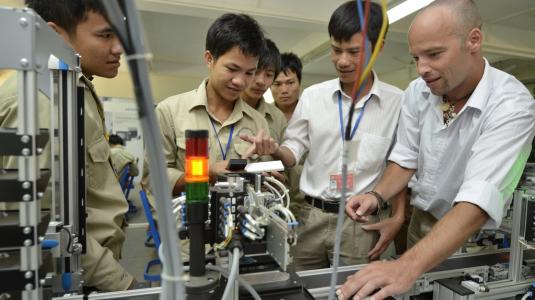Sustainable Management of Industrial Areas (SMIA, GedZI, ProCAIS)

© GIZ
Sustainable Management of Industrial Areas (SMIA, GedZI (French), ProCAIS (Spanish)) is an innovative approach to systematically improve the sustainable management of industrial areas (IA) promoting and supporting the development of resilient Industrial Areas. Industrial areas applying SMIA aim at fostering Green and Inclusive Economy
- by increasing competitiveness through efficient use of both, non-renewable and renewable resources;
- by generating green and decent jobs;
- by minimising environmental and climate impact, as well as risks; and
- by continuously improving the overall efficiency of management and cooperation structures.
Thus, SMIA contributes to the SDG goal 9 “Industry, Innovation and Infrastructure” and to climate-resilient, sustainable development.
The original method applied in 2006 by e-Parc, France, UNEP-IE Paris, and PREMAnet-GIZ drew on the combination of three well established and widely used and cost-effective methods and tools, i.e. PREMA© (www.premanet.net), APELL and Eco-mapping.
Since then, the original concept has been profoundly modified, enlarged and enhanced during applications in Tunisia (ReCapZI, CCP-RAC), Indonesia (GIZ-EU), Ghana (GIZ-PREMAnet-CAD), Peru (GIZ) and Mexico (GIZ). SMIA 4.0 version integrates more comprehensively climate change and biodiversity aspects, thus enhancing the resilience perspective (Sustainable Management of Resilient Industrial Areas SMaresIA).
A French language version (GedZI – Gestion durable des Zones Industrielles) specifically considering the situation in Tunisa was developed by GIZ ReCapZI.
A Spanish version (ProCAIS – Programa de Competitividad de Áreas Industriales a través de la Sustentabilidad) specifically consider the situation in Mexico was developed by GIZ PGAU II.
Main features and components
SMIA primarily targets managers and managing bodies of industrial areas. Representatives such as managers or directors of local companies can also participate. Sustainable Management of Industrial Areas builds on four dimensions – the organisational, the environmental, the social and cultural, and the economic one. To be considered sustainable an industrial area (IA) should comply with certain criteria. Some examples are listed below:
Organisational dimension
- Comprehensive and consistent planning of the site / measures before starting construction or implementation;
- Promoting forms of participation for interested stakeholders or the public;
- Establishing and supporting networks between companies inside the industrial area;
- Continuously maintaining, cleaning and improving the industrial area;
- Managing disaster risks and ensuring business continuity;
- Providing (eco-)efficient and reliable services such as water, energy supply, transport, as well as waste and waste water management.
Environmental dimension
- Promoting, supporting and ensuring compliance with environmental laws and norms;
- Promoting and supporting resource efficiency and symbiosis between industries within the area;
- Protecting natural resources and biodiversity.
Social and cultural dimension
- Fostering improvement of working and living conditions of both workers and surrounding communities;
- Establishing a passenger transport system;
- Establishing, communicating and implementing a of safety concept;
- Promoting occupational health and safety standards and measures;
- Promoting gender equity and encouraging the participation of workers and representatives of the civil society;
- Strengthening the entrepreneurship spirit.
Economic dimension
- Establishing and implementing a comprehensive business plan ensuring the economic viability and profitability of the industrial area;
- Offering high quality services to companies and their customers.
The systemic approach of SMIA
- Executing a sustainability diagnosis of the IA identifying the actual performance level (baseline), and improvement potentials
- Analysis, development and implementation of measures increasing resilience, resource efficiency, and management performance
- Support to the change processes by means of consultancy, coaching and group counselling using a wide range of organisational and personal development tools
- Monitoring and documentation of results, e.g. through case studies;
- Integration of new practices in working structures and process and the establishment of a continuous improvement approach, which can be the basis for certification
The training approach of SMIA
Through interactive training sessions which use experiential methods of adult learning, industrial estate managers and company representatives are enabled to effectively implement innovative methods for improving the environmental, organisational, social and economic performance of the IA as well as the individual companies located in that area.
Coached Networking Meetings enable managers / management units to overcome obstacles in implementing improvements and to collaborate in finding innovative solutions for the industrial area; e.g. in the fields of waste management, energy efficiency and renewable energy, joint action by companies. Group consultancy methods can be applied in the long-term after, even via virtual channels (E-Learning, Webinars).
Mobilisation of companies for the objective of sustainable IA is supported by specific offers to companies, e.g. moderated thematic working groups (e.g. on risk management) is, training tools (e.g. PREMA©) or social events.
Personal development of IA managers and company staff if appropriate is supported by case work and coaching, enhancing personal competences in effective communication, cooperation, conflict management and negotiation.
Stakeholder Management is improved by application of improved communication and cooperation skills, as well as moderated Round Table Processes where public and private stakeholders come together regularly to clarify challenges, interests and responsibilities, to improve interfaces and cooperate for achieving sustainable solutions for IA problems and opportunities.
In general, SMIA is based on a learning by doing approach.
Some SMIA tools are useful for effective management of round table, dialogue or stakeholder management processes between Industrial Area managers / managing units and relevant institutions and decision-making bodies
Implementation and work steps
Acquisition phase
- Mobilising a group of 5 – 10 industrial areas to implement SMIA jointly.
Training 1
- Sustainability Diagnosis on the ground and SWOT analysis; development of Action Plan 1 with 3 immediate measures (one with economic benefits, one with environmental/resource efficiency benefits, one with low demand on capacity to implement)
Training 2
- Evaluation and documentation (case studies) of implemented measures and preparation for additional systematic improvements;
- In-depth treatment of selected topics, such as stakeholder management, mobilisation of companies for IA topics, risk prevention and management, resilience-related topics (IA and climate change, biodiversity)
- Preparation of a structured round table or dialogue process with relevant stakeholders
- Development of innovative services to companies by management units
- Action Plan 2
Training 3
- Evaluation and documentation (case studies) of implemented measures and preparation of additional and more complex measures, especially from in-depth treatment of specific topics
- Possible: implementation of structured Round Table or Dialogue process with relevant stakeholders
- Development and offer of innovative services to companies by management units
- Concept for integration of improved practices and behaviour into overall management system
- Possible: development of strategy for enhancing capacity of manager / management unit to act as moderator / mediator in social conflicts
- Action Plan 3
Training 4
- Evaluation and documentation (case studies) of results
- Integration of Concept for maintenance of self-organised improvement process of IA group and support, as well as successful formats, e.g. Round Table or Dialogue processes with companies (internally), stakeholders which constitute the frame conditions for the IA. etc.
- Practice of role of moderator / mediator in conflict situations
- Long-term Action Plan 4 for a cycle of continuous improvement.
- Long-term plan for financial support to SMIA training through existing channels
Lessons learnt
- GIZ consultants have seen highly positive results of SMIA implementation.
- Industrial area stakeholders are expecting positive change in their industrial area.
- Relationship between stakeholders is facilitated. This can avoid any delay or dysfunction in industrial area.
- Companies managers and workers as IA clients are expecting good services and better quality of life.
- IA management must have positive attitude through overall the network of partners. There is somewhere a solution.
- Mentoring will help IA directors to reach objectives.
- IA’s clients need new services in the industrial area.
- SMIA training can help IA managers to make bottom up changes.
Requirements
- The willingness of industrial area managers (company and institutional representatives) to improve their overall management: environmental/ resource management, organisational, social, risk and economic performance.
- An active commitment from IA managers and heads.
- Well prepared experts and consultants
Output
- Improved organisational development: learning culture
- Improved reporting at IA level: Self-Monitoring Reports of Companies, Industrial Area Information System, Consolidated Reports on Industrial Area level
- Improved communication with relevant stakeholder (institutions)
- Reduced risk by improved risk management (industrial and natural)
- Strengthen the relations between neighbouring actors, the area and the enterprises
- Improve the management/administration of the industrial area and of its resident enterprises
- Communication with public partners (stakeholders) using documentation and case studies methodology.
- Implementation of mentor/mentee relationship to facilitate the integration of new directors
- Decreased resource use and pollutant emissions
- Increase resource efficiency through projects of industrial symbiosis
- Enhanced management of social aspects of industrial area
- Reinforce corporate and community responsibility
- Mentor network
- Cost savings
- Improve regional positioning
Useful links
Downloads
Characteristics
Phase of intervention
Introducing SIA, Analysis, Designing SIA, Master planning, Retrofitting, Operating SIA, Management
Level of intervention
Park management
Regions
Global, Latin America & Carribean, MENA
Countries
Germany, Ghana, Indonesia, Mexico, Peru, Tunisia
Target groups
Company, SME, Industrial area management and operator, Local and international consultant and advisor


